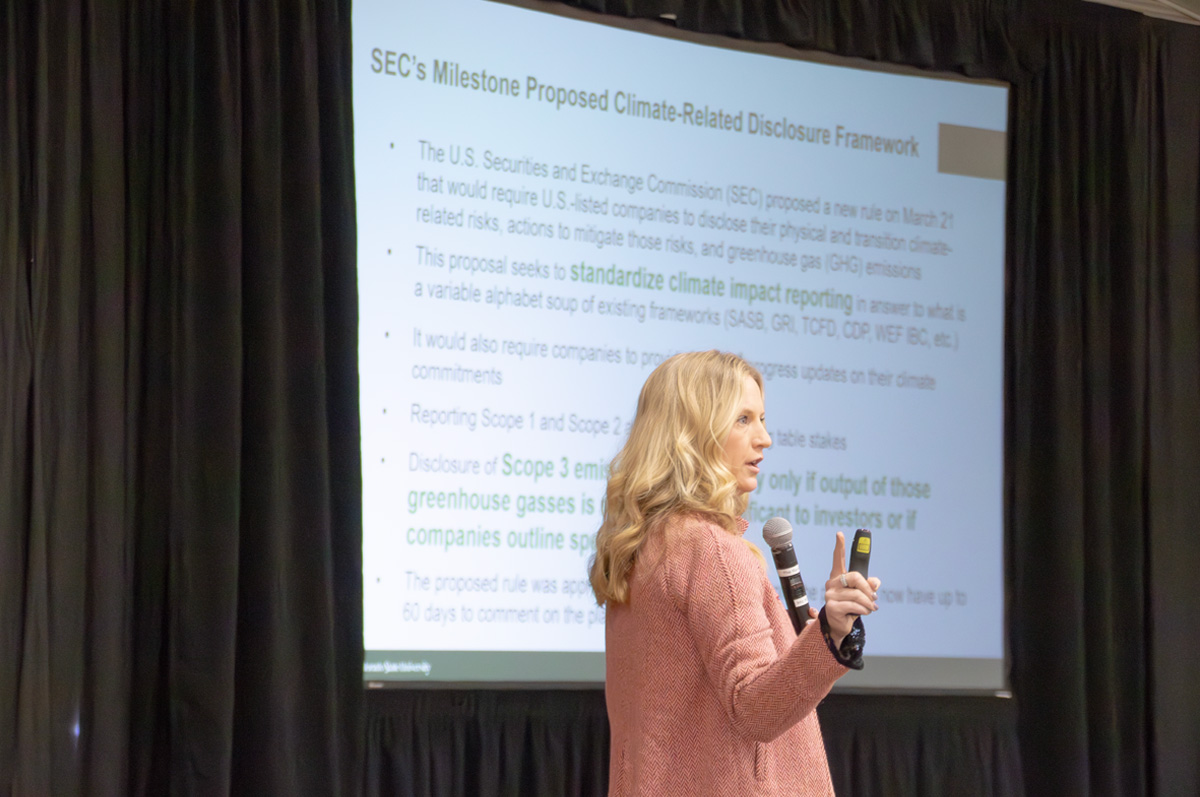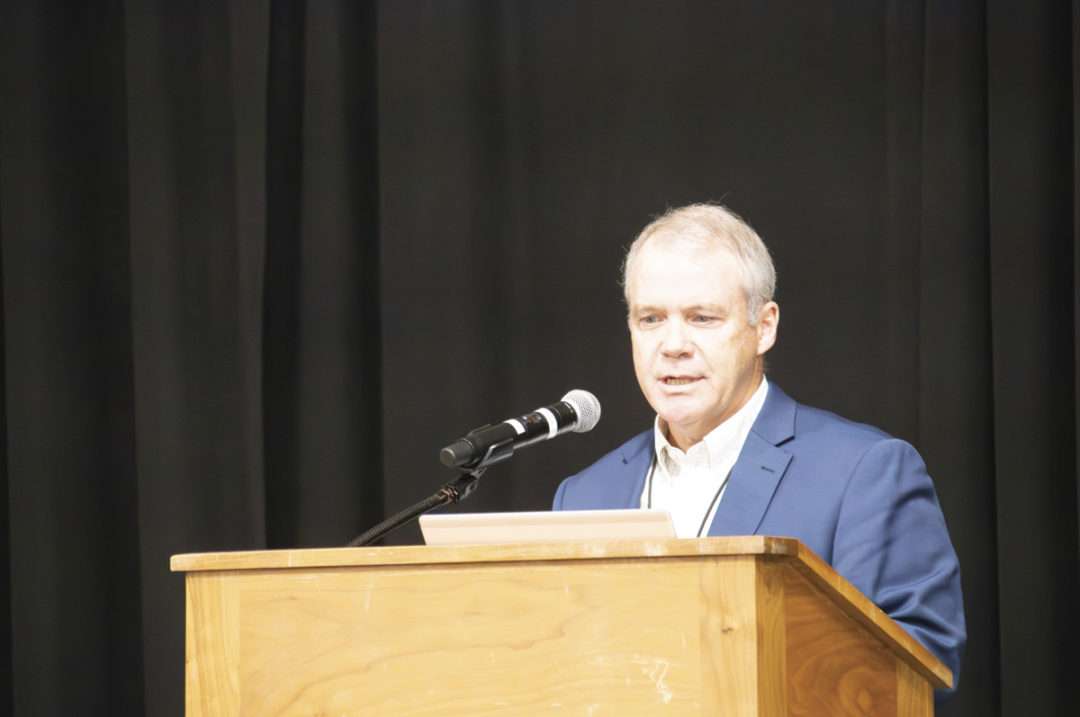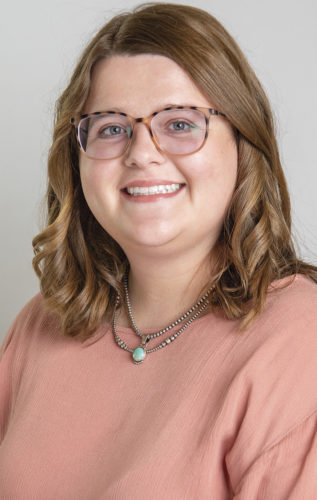Range Beef Cow Symposium XXVII took place in Loveland, Colorado, on Dec. 13-14, 2023. With two days filled with many educational and enlightening presentations, panels and demonstrations, it was hard to just pick a couple to share. But here’s my attempt to share two informative days in just a few words.
Herd health planning – protecting your cow herd
Herd health is, or should be, on every producer’s mind throughout the year. While herd health is different for every operation, it’s worth a time investment in forward planning, said Russ Daly, DVM, South Dakota State University Veterinary Extension.
Herd health is more than just a vaccine schedule. It includes managing new animals, promptly detecting problems when they arise, understanding the role of vaccines and using them correctly, and paying attention to everyday chores that affect an animal’s health.
“The biggest threat to biosecurity is incoming animals,” Daly said.
Do your homework when purchasing animals. Find the herd of origin and look for pre-sale individual animal testing. When the animal comes home, designate an isolation area and schedule vaccines, treatments and post-sale testing for the new cattle.
Daly posed the question, “Is a closed herd really closed?” Even if you are not purchasing replacements, are you buying bulls? How about sharing public land with other herds? Daly added there’s even a threat to herd health if wildlife come in contact with your cattle. All these things are important to think about when developing a herd health plan.
Additionally, it is important to promptly detect problems in your herd’s health when they arise. Common signs of this include cow illness and death loss, calf scours, pasture respiratory disease in calves and reproductive failure.
Steps you can take to plan for this is to plan routine observations, especially in summer pastures. You can discuss interventions with your veterinarian and decide the threshold for herd treatment and diagnostic testing. Lastly, schedule routine pregnancy and bull testing exams.
Developing a herd health plan is not the same as developing a vaccine schedule. Use vaccines as a safety net, Daly said. But don’t use vaccines as a safety net while not doing what you can with handling cattle and equipment properly and preventing cattle diseases beforehand.
Planning steps you can take when it comes to preparing your vaccination program include scheduling a time to review your current program and discussing it with your vet to make sure it is appropriate based on your risks, what could be missing, vaccine timing and boosters, and any new developments. Make sure you are checking your refrigerators regularly and monitoring the correct temperature. Also, replace and repair syringes and equipment.
What it really comes down to may be the everyday chores that make the difference in your herd’s health, Daly said. Work to keep cattle environments clean and dry. Use internal and external parasite control. Develop and use nutrition and pasture management and genetics and breeding programs to increase your herd’s health and protection against disease. Keep records and develop treatment protocols.

Kim Stackhouse-Lawson speaks on consumer drivers of sustainability. Photo by Tyrell Marchant.
Consumer drivers of sustainability
Sustainability. It’s a word we’ve all been hearing over the past few years. But what is it? What does it really mean? Or is it just a "buzzword"?
“Sustainability is complex, multifaceted and often emotionally driven,” said Kim Stackhouse-Lawson, Colorado State University AgNext director.
And while consumers still care that their food is produced “sustainably,” they are not the pressure anymore. The U.S. government committed for the country to have net-zero greenhouse gas emissions by 2050. And with that, many large companies are making their own net-zero commitments.
In 2021, 9.3% of total greenhouse gas emissions in the U.S. were from agriculture. Of that, 4.4% were specifically from animal agriculture.
Unfortunately, while other industries can cut their emission, cows will never not burp. This means as emission totals lower and other industries are able to cut back at a larger rate, the percentage of total emissions from animal agriculture is going to rise, even as the actual amount of emissions decreases. Not only is this something that will have to be explained to consumers, but also government officials and people making policies.
OK, but what can we do?
The Colorado State University AgNext program is just one entity developed as a way to look forward in time, Stackhouse-Lawson said. While there is not going to be one solution to fix it all, AgNext is performing research in many areas to find solutions to help lower emissions from all of animal agriculture.
Rangelands store 20% of the globe’s soil organic carbon, Stackhouse-Lawson said, and livestock allow us to produce food on land unsuitable for cultivation while enhancing ecosystems.
She added that the cow-calf sector makes the most methane and carbon of the livestock sector. However, that is because she is upcycling, creating food and other animal byproducts from otherwise unusable resources, something that is difficult to measure and prove to others outside of the industry.
The most important thing we can do for soil organic carbon in rangelands is to preserve rangelands and avoid conversion, restore cultivated and degraded lands, and practice adaptive livestock management, Stackhouse-Lawson said.








